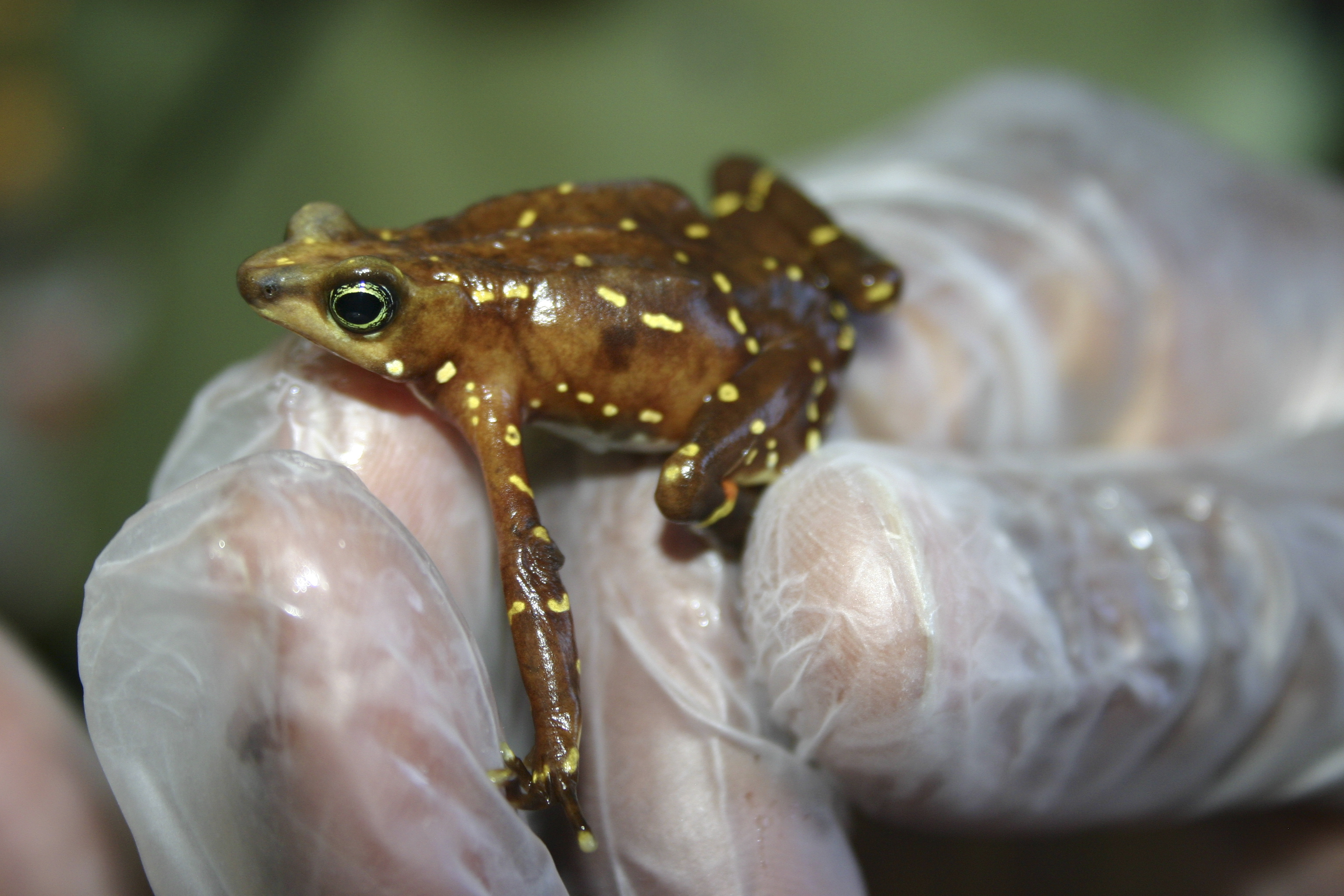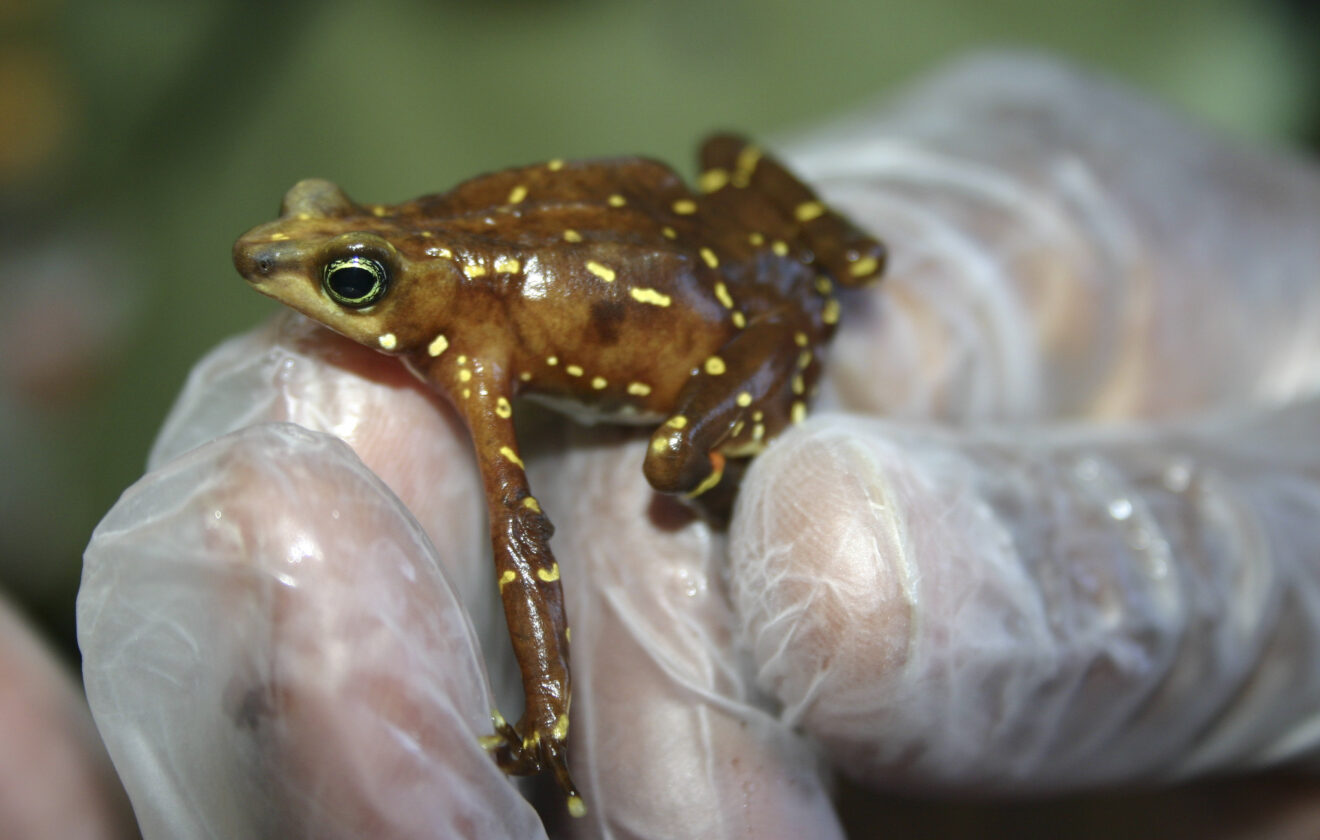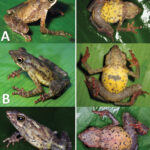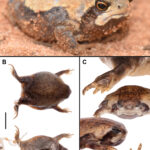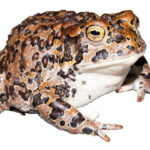Atelopus glyphus: Discovering Panama’s Vibrant Harlequin Jewel#
In the dense, vibrant rainforests of Panama, a creature adorned as intricately as a carefully crafted piece of jewelry dances quietly beneath shadowed leaves and beside crystal-clear streams. Its delicate stature and vivid patterns belie a remarkable story of adaptation and resilience. Known scientifically as Atelopus glyphus, commonly referred to as the Pirre Harlequin Frog, this species captures the curiosity of biologists and wildlife enthusiasts alike, symbolizing both the fragility and spectacular beauty of our planet’s biodiversity.
Don’t be fooled by its diminutive size—A. glyphus is a herald of ecological stability, an ambassador boasting unique evolutionary refinements, and unfortunately, a poignant reminder of the drastic threats faced by tropical ecosystems worldwide. Before delving deeper into their captivating life history, let’s uncover the fascinating taxonomy that situates this frog within the broader tapestry of amphibian life.
Taxonomy and Classification#
Atelopus glyphus belongs to the order Anura, a diverse group encompassing all frogs and toads. Within this order, it resides in the family Bufonidae, more commonly known as true toads—a classification intriguingly juxtaposed against their unconventional appearance. Within Bufonidae, it belongs to a storied genus of striking amphibians: Atelopus, affectionately called harlequin frogs due to their vibrant coloration and whimsical patterns.
The genus Atelopus comprises largely tropical species inhabiting Central and South America, each presenting stunning coloration and patterns that hint both at their ecological niches and toxic properties. Within this diverse genus, our protagonist species, Atelopus glyphus, was first described by Dunn in 1931. The word “glyphus” highlights the unique glyph-like markings these frogs display—patterns enigmatic enough to rival ancient writing etched carefully upon their tiny frames.
Natural Habitat#
A wanderer through the lush canopies and dense understory vegetation of Panama’s tropical rainforests, Atelopus glyphus occupies an altitude range from about 300 to 1400 meters above sea level. Primarily native to the majestic Darien Province, these frogs live in close communion with clear, freshwater streams and pristine forest habitats, where moisture is abundant and consistent temperatures offer the frogs a refuge against temperature extremes.
The Vibrancy of Darien’s Forests#
Few wildernesses rival Panama’s Darien gap in biodiversity and ecological importance. Dense plant growth, abundant moisture, and varied microclimates offer rich habitats for a panoply of lifeforms. Within this maze of greenery, the Pirre Harlequin Frog finds shelter beneath broadleaf plants, alongside gently trickling brooks and waterways. It is here, amidst the auditory symphony of rippling streams, humming insects, and diverse bird calls, that A. glyphus delicately forages, breeds, and thrives.
This specialized habitat requirement, while nurturing, simultaneously makes the species highly vulnerable. Even minor habitat perturbations can resonate dramatically within their delicate ecological balance—one of the key reasons conservationists pay heightened attention to their status and environmental threats they may face in coming decades.
Physical Characteristics#
One cannot mention the Harlequin Frog without immediately conjuring an image of striking contrast and color. Atelopus glyphus is no exception; individuals exhibit a bold palette of shades including vivid yellows, vibrant greens, contrasting blacks, and occasionally orange or gold hues. Most individuals possess bold black markings over bright yellow or golden-green skin, creating hinderingly artistic patterns evoking visual delight even among the uninitiated observers.
Typically small—the bodies of these petite amphibians rarely exceeding 4 centimeters in length—Pirre Harlequin frogs exhibit significant sexual dimorphism. Females tend to be larger and more robust than their male counterparts. Their slender limbs and agile frames facilitate graceful movements through the dense jungle foliage and the maneuvering along slippery stream banks.
Toxicity and Adaptations#
Beneath their striking appearance lies an ingenious survival strategy. Like many species belonging to the genus Atelopus, these frogs harness potent toxins secreted through specialized glands in their skin. This toxicity serves primarily as a deterrent against predators. It proclaims a chemical declaration of caution without uttering a sound—bright colors efficiently signal to potential adversaries that they could face fatal repercussions of dining upon the seemingly defenseless amphibian.
Interestingly, scientists study the biochemical properties of these toxins not only to better understand amphibian adaptations but also to potentially unlock possibilities for biomedical applications, underscoring the hidden scientific value tucked within these charismatic creatures.
Behavior and Life Cycle#
In terms of day-to-day life, Atelopus glyphus showcases habits typical of rainforest amphibians. These frogs are notably territorial, often occupying defined home ranges along swiftly flowing streams adorned with moss-covered rocks and dense vegetation, providing ample shelter and plenty of insect prey.
Diet and Feeding Habits#
Primarily insectivorous, Pirre Harlequin Frogs feed upon numerous arthropods residing within tropical jungles—ants, beetles, mites, tiny spiders, and various other minute invertebrates form their daily menu. Their keen eyesight and agile movements make these frogs precision hunters; swift strikes effortlessly snag prey, facilitating survival within an environment brimming with insect life.
Reproductive Rituals#
Atelopus glyphus breeding strategies are intricately synchronized with seasonal rainfall patterns. As the rains arrive, swollen streams draw individuals from their protective habitats, converging into ordered mosaic choruses of calling males actively declaring reproductive territories.
Male calling activity produces subtle yet resonant vocalizations—chirps and whistles echoing gently amidst tranquil rainforest sounds. After a careful courtship ritual succeeds, females deposit gelatinous egg masses along the undersides of leaves or beneath submerged rocks, safeguarding their progeny from aquatic predators. Tadpoles, upon hatching, immediately enter the streams, feeding voraciously upon available algae and particulate organic matter, setting the stage for them to eventually emerge as fully developed froglets.
Ecological Role#
The ecological significance of the Pirre Harlequin Frog cannot be overstated. Acting both as a predator, contributing to insect population control, and as prey providing nutrients for larger predators such as birds, snakes, and small mammals, A. glyphus maintains a stable position within its food web.
Moreover, as amphibians possess sensitive permeable skin, these frogs serve as crucial biological indicators. Changes in amphibian populations often act as red flags, signaling broader ecosystem disturbances—from pollutants seeping through soil or water systems to climate-induced microclimatic shifts.
Threats and Conservation Status#
Despite their fascinating adaptations and ecological roles, Pirre Harlequin Frogs face pressing environmental dangers. Deforestation, pollution, climate change, and especially disease outbreaks, notably chytridiomycosis caused by the fungus Batrachochytrium dendrobatidis, significantly threaten these charismatic amphibians.
The International Union for the Conservation of Nature (IUCN) currently labels Atelopus glyphus as ‘Critically Endangered’, signifying an urgent conservation priority. Dedicated conservation efforts have recently begun gain momentum, including captive breeding programs, disease mitigation research, and habitat preservation initiatives, providing fragile hope for future recovery.
Cultural and Scientific Significance#
Atelopus glyphus, deeply emblematic of Panamanian rainforest biodiversity, also carries significant symbolic weight. Indigenous communities often recognize these colorful amphibians as important eco-cultural entities symbolizing forest vitality and fertility.
Scientifically, this species, among other threatened amphibians, represents a front line in conservation biology—an opportunity to pioneer ecological preservation techniques, health assessment methodologies, and strategies for sustainable coexistence.
Conclusion: A Jewel Worth Saving#
The Pirre Harlequin Frog, with its enchanting aesthetics and remarkable biology, embodies the importance and urgency of biodiversity conservation. Against overwhelming threats, their survival serves as a source of inspiration and obligation for humankind to act decisively.
Readers, nature lovers, and conservation advocates alike: let us champion awareness, pledge support for ongoing conservation initiatives, and push for stronger protection measures. Through united efforts, we can preserve not just the dazzling Atelopus glyphus, but the vibrant tapestry of life it symbolizes.



